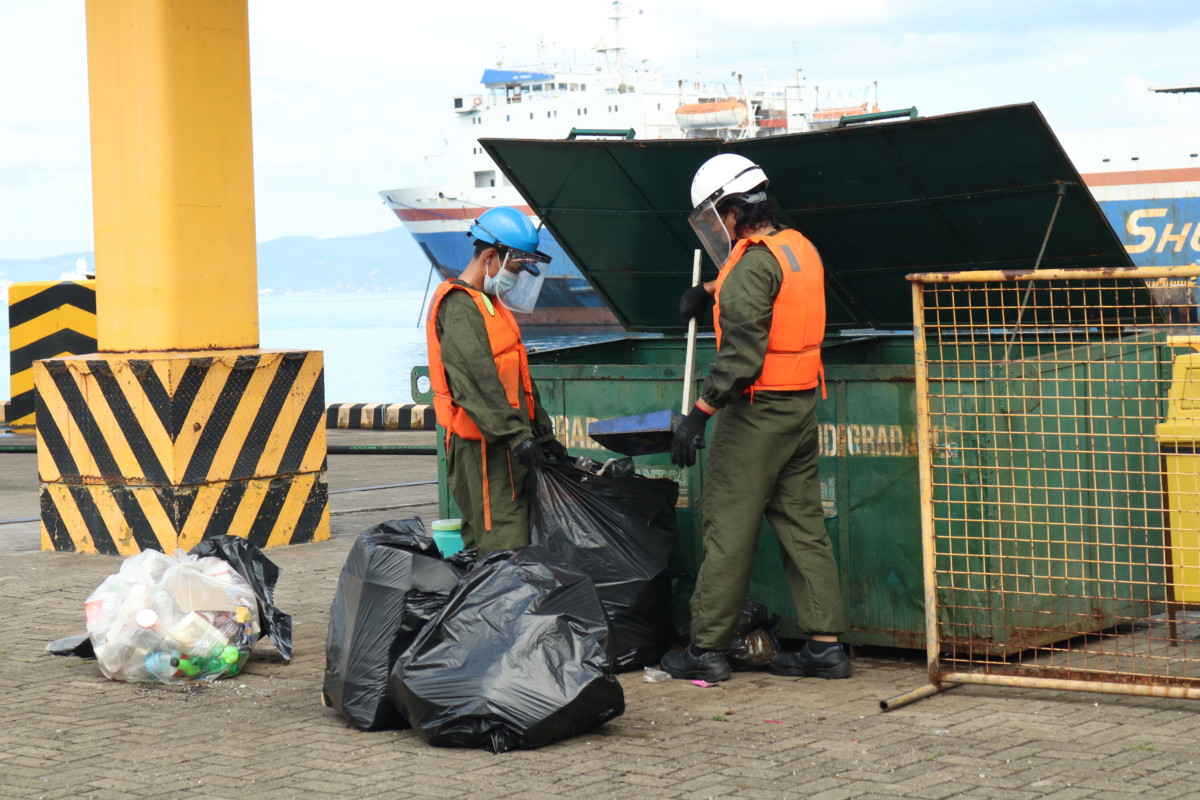PPA and WWF-Philippines commit to reduce plastic wastes in three ports
January 2022

The Philippine Port Authorities signed a Memorandum of Understanding (MoU) with World Wide Fund for Nature (WWF)-Philippines on August 3, 2021, with the goal of achieving 50% reduction in plastic waste leakage in the Manila North Port, Port of Batangas, and Port of Cagayan de Oro.
Plastic pollution has become one of the world’s most pressing issues today threatening both public and planetary health. In WWF’s recent EPR report, it was estimated that Filipinos consume a total of 2.15 million tons of plastics every year. Only 9% of this total waste is recycled and about 35% potentially leaks into the environment. In addition, a new study finds, on average, people could be ingesting 5 grams of plastic every week, which is the equivalent weight of a credit card.
In 2020, the World Wide Fund for Nature (WWF) and the Grieg Foundation started a joint project entitled ‘Clean Ports, Clean Oceans: Improving Port Waste Management in the Philippines’ to strengthen efforts to combat plastic pollution by engaging governments, businesses, communities, and the general public with a comprehensive strategic approach in every focus port.
“WWF-Philippines continues its work in fighting plastic pollution to ensure a sustainable future for all. This urgent call for action requires a collaborative effort from everyone and we are very committed to work with the Philippine Ports Authority and other port stakeholders to reduce their plastic waste leakage. Our ports, including the communities, local governments, and organizations have a role to change the ending, and together, we shall see a future with no plastics in nature,” says WWF-Philippines Executive DIrector Katherine Custodio.
WWF-Philippines and PPA, through the Port Management Offices (PMOs) from Manila North Harbor, Port of Batangas, and Port of Cagayan de Oro, are working to establish a baseline on the overview of plastic waste generation from ports, ships, and communities within the port areas. With this baseline, WWF-Philippines works with relevant stakeholders on developing a strategy and coming up with interventions to achieve the 50% reduction of plastic waste leakage in the 3 concerned ports.
Ports have been generally selected based on potential project impact, advocacy from PMOs, and ease of project operations.
The Manila North Port is one of the four main terminals that comprises the Port of Manila, the chief port of the Philippines. Its location in the district of Tondo, facing Manila Bay, and at the mouth of Pasig River have made it a very strategic location for trade and commerce pre-dating the Spanish occupation. Currently, the North Port has one container terminal, one multi-purpose terminal with seven piers, and one passenger terminal serving inter-island travelers. The port is managed by Port Manager Annie Lee F. Manese of the PPA PMO NCR North and operated by the Manila North Harbor Port Inc. (MNHPI), a subsidiary of the International Container Terminal Services Inc. (ICTSI).
The Batangas Port, also known as the Batangas International Container Port, is a publicly-owned international seaport situated in Barangay Sta. Clara, Batangas City. The port offers cargo handling and passenger services and is the second biggest port in the country in terms of revenue. Spanning an area of 175.1 hectares, the port houses three passenger terminal buildings, three domestic general cargo berths, and the country's largest Multi-level Car Storage Facility. Due to its market proximity, modern technologies, and storage capacity, the port’s containerized and non-containerized cargo handling facilitates a robust trade of goods in the CALABARZON region and Manila. The port is managed by the Philippine Ports Authority (PPA) while the Batangas Container Terminal is operated by Asian Terminals Inc. (ATI).
The Port of Cagayan de Oro, dubbed as the Global Gateway to Mindanao, is the busiest government-owned port in Northern Mindanao. Strategically located along the north central coast of the island of Mindanao facing Macajalar Bay, the Port of Cagayan de Oro offers the best entry and exit point of both goods and passengers to and fro the region and other parts of the Philippine archipelago. The Port of Cagayan de Oro is ISO 9001:2008 certified, IMS certified, and compliant with the International Ship and Port Facility Security code.
This project will run until 2023 with possible upscaling of solutions in other ports in the Philippines and the world.
Clean ports, Clean Oceans: Improving Port Waste Management in the Philippines is a project under WWF-Philippines’ No Plastics in Nature initiative.
For more information:
Czarina Constantino - Panopio
Project Manager
cconstantino@wwf.org.ph
